Summary
This article aims to understand homeopathic cure by way of polarity. At its core is the idea that an inversion of the polarity in the energy is the cause for the disturbance in the life force. Accepting this premise allows an understanding of the way the homeopathic remedy works. Another conclusion stemming from the idea of polar inversion is that homeopathic healing actually materializes through the matching of the disturbance in the life force with its energetic negative image. This creates a situation where positive and negative forces in the disturbance and in the remedy cancel one another and release the energetic block from the life force.
Keywords: Law of Similars, Inversion of polarity, Healing by the negative.
Introduction
This article tries to understand homeopathic cure by way of polarity. It has four main sections:
- Methods of cure.
- Polarity
- Homeopathic healing.
- Examining polarity analysis.
- Methods of Cure
‘It has always been a matter of dispute as to how our homeopathic remedies act. The question, embracing as it does that of infinitesimal doses, is one of the most vital for homeopathy, and one that even at this day exposes us to the ridicule of our old school breathen.’ ( Boericke, Twelve Tissue Remedies1, 5-6)
To start, several healing approaches will be presented and we shall talk about energy in illness and in cure. We start with Peter Levine’s conception of trauma as presented in his book ‘Waking the Tiger2’. Levine writes:
‘Our lives are like streams. The currents of our experience flow through time with periodic cycles of tranquility, disturbance, and integration. Our bodies are the banks of the stream, containing our life-energy and holding it in bounds, while allowing it to freely flow within the banks (p.197).’
‘…shock trauma can be visualized as an external force rupturing the protective container (banks) of our experience. This breach then creates a turbulent vortex. With the rupture, an explosive rushing out of life-energy creates a trauma vortex. This whirlpool exists outside the banks of our life stream of normal experience (p.197).’
‘Nature responds, thank goodness, by immediately creating a counter vortex – a healing vortex – to balance the force of the trauma vortex (p.199).’
Levine’s description of disturbance is of two opposing energetic forces that balance one another: the trauma’s energy and a counter life energy force.
The healing process (renegotiation) is described as follows:
‘When we are able… to slow down and experience all the elements of sensation and feeling that accompany our traumatic patterns, allowing them to complete themselves before we move on, we begin to access and transform the drives and motivations that otherwise compel us to re-enact traumatic events. Conscious awareness accessed through the felt sense provides us with a gentle energetic discharge just as effective as that which the animal accesses through action. This is renegotiation (p.187).’
We are presented with a three stage development: an energetic disturbance that is later balanced by a counter energetic force creating a problematic standstill, which is followed by a healing process, through the energetic discharge of the trauma and the releasing of blocked energy.
A comparison between Levine’s concept of trauma and early psychoanalysis’ concept of disturbance and of cure, shows us that the two approaches resemble one another:
‘Thus we have in psychoneurosis, first a defense of the ego against an instinct, then a conflict between the instinct striving for discharge and the defensive forces of the ego, then a state of damming up, and finally the neurotic symptoms which are distorted discharges as a consequence of the state of damming up-a compromise between the opposing forces… (Fenichel3, 20)’
‘Therapy can and should imitate both ways. On the one hand the therapist may give rest, reassurance, the satisfaction of wishes for passivity and dependency… On the other hand he may give catharsis, the opportunity for stormy discharges and for the repeated re-experiencing of the trauma and a verbalization and clarification of the conflicts involved (Fenichel, 127).’
Here too the basic construct is the same: a conflict between instinct and ego brings about a damming up of psychic energy reflected as neurotic symptoms. In the healing process, the working through the repressed psychic material releases the dammed energy.
In traditional Chinese medicine the forces involved are quite similar. Chinese acupuncture is linked to the concept that diseases occur due to disruptions in the flow of energy (called qi) in the human body. The acupuncture treatment aims to stimulate certain places on or under the skin of a person (the so-called acupuncture points), with the aim to release this qi.
And so it is in Shiatsu. We arrive at the conclusion that in the course of time human beings have developed multiple and diverse methods of cure, but the basic principles behind all those methods remained quite similar.
What is the relation of homeopathy to all this? In other words, does homeopathy, being a method of cure, follow principles that are different from the ones mentioned above? As we shall see, it does not and it should not. The intricacy, as I see it, is in the law of similars and in the symptomatic picture, a point I shall yet return to.
2.Homeopathy
Let us now translate the previous ideas in the language of homeopathy. First we should examine the homeopathic proving process. It is an interesting phenomenon that in every proving we see how provers who are in principle healthy, show a symptomatic picture. How can this be understood? The remedy’s energy affects a “healthy” human being and evokes a symptomatic picture, in a way that cannot be coincidental. The following thoughts arise:
- Since the symptomatic picture is a “healthy” individual’s reaction to the remedy, then its source must be in the remedy.
- This is further emphasized by the fact that the symptomatic picture is partially common to more than one prover.
- Since the symptomatic reaction in the proving is a permanent phenomenon, then there is a part in the remedy’s energy that is outwardly reflected by the organism.
- This part of the energy is energy that the organism seems incapable of deciphering, hence its reflection.
- Another part of the remedy’s energy, and of energy in general, is deciphered by the organism. Were it not so, man would be shut off from the outside world and neither life nor cure would be possible.
Assuming we accept these assumptions, let us define the following forces:
- δ force – The part of the energy that is indecipherable by the organism and reflected as symptoms.
- γ force – The energetic information that is deciphered and put to use by the organism.
That is, if we describe energy in terms of energy units, then we get:
δ force —-> indecipherable energy reflected as symptoms
γ force —-> energetic information put to use by the organism
When we talk in homeopathy of energy in illness and in cure, we refer to an energetic disturbance in the life force that expresses itself in symptoms, to be healed later on by the homeopathic remedy. This we see in Hahnemann (Organon, §11):
‘When a person falls ill, it is initially only this spirit-like, autonomic life force (life principle), everywhere present in the organism, that is mistuned through the dynamic influence of a morbific agent inimical to life… The life principle is a power-wesen invisible in itself, only discernible by its effects on the organism. Therefore, its morbid mistunement only makes itself known [discernible] by manifestations of disease in feelings and functions… In other words, the morbid mistunement of the life principle makes itself discernible by disease symptoms; in no other way can it make itself known4’.
In a previous paper5 I spoke of the remedy in terms of a mirroring of the illness. My claim was that the law of similars is in force on the energetic level as well as on the (accepted) symptomatic one. That is, if a similarity exists between the two symptomatic pictures, the remedy’s and the patient’s, then that similarity should be in force between the two energetic sources of these pictures, i.e. the remedy’s energy and the disturbance in the life force. I also stated that since the remedy is an artificial entity and is not backed by a life force of its own, then it can be understood as a reflection of the disturbance in the life force.
Now, if the remedy is a mirroring of the disturbance, then of course we can reflect in the opposite direction, i.e. reflect the energetic disturbance by the remedy, and then we get:
What do we understand by reflecting the illness by the remedy? The mirroring of the symptomatic picture (δ force) goes without saying because that is a basic rule in homeopathy. But what about the disturbance in the life force? This has to be resonated by the remedy’s γ force, since in homeopathy the symptomatic picture is not understood as the disturbance per se but only its expression. That is, reflecting the illness by the remedy suggests that it is the remedy’s γ force, who’s action is hidden from us (unlike the symptomatic picture), that is related to the disturbance in the life force; it mirrors it, and in cure it is responsible for releasing it.
What happens in illness?
a. The two-part energy unit comes in contact with the life force.
b. γ force becomes entangled in the life force, disturbing its flow.
c. δ force is reflected as symptoms.
d.The symptomatic expression of δ force, being “tied down” by γ force, cannot break free from the organism.
We see that we are approaching the “classical” construct of a disturbance, where two opposing energetic forces create a problematic standstill which is expressed by a symptomatic picture.
In graphic terms:
What happens in healing?
The encounter between the two γ forces, of the remedy and of the illness, brings about the releasing of the disturbance, followed by a releasing of the symptomatic picture as well, and the healing of the organism.
3.Polarity
Before we enter into questions relating to polarity, the complexity of the theme should be remembered. What exactly is polarity? Does it belong to the field of physics? Or is it more of a biochemical issue? Can polarity be found also in other fields, such as in philosophy or in music? It appears that polarity is all around, that is why the issue should be addressed with care and our limitations remembered.
The Miriam-Webster’s definition of the term is as follows:
‘The quality or condition inherent in a body that exhibits opposite properties or powers in opposite parts or directions or that exhibits contrasted properties or powers in contrasted parts or directions.’
Polarity is commonly understood as a way of describing a phenomenon through its extremes. Or, one could say, a tension between two opposites. To mention some expressions of polarity:
- Polarity in the human organism: a person suffering from a chronic pain in his left shoulder (and not his right shoulder), and has the tendency for high blood pressure (and not low blood pressure).
- Polarity in the modality of the case: this person is ameliorated by warm weather (and not cold weather), and by sleeping on the left side of the body (and not the right side).
- Polarity in autism: Frances Tustin6 talks of ‘autistic objects’ and ‘autistic shapes’ among autistic children. ‘Autistic objects’ are described as hard objects the child carries around with him. Their salient characteristic is that they are felt as a part of the body, which gives the child a feeling of safety. ‘Autistic shapes’ arise from soft bodily sensations, such as the flow of urine from the body, or bubbles of spit, and their function is to soothe the child. Both autistic objects and autistic shapes are inhibitors and suppressants, and so they stop emotional and cognitive developments.
- Affective polarity/bipolar disorder: bipolar disorder (BD) can be described as a state where a fundamental loss of emotional stability occurs, and is expressed by a periodic shifting of emotions between the two poles, the manic pole and the depressive pole.
- Polarity in personality disorder: In psychoanalysis, splitting is a defense mechanism that is common in people suffering from personality disorder. It is described as a mode of thinking where negative and positive qualities in a person and in his/hers relations to other people do not attain an integral cohesiveness. What ensues is a “black and white” mode of thinking. For example, a person’s motives will be understood as all good or all bad, without taking into consideration that people’s motives are never one-dimensional.
- Further examples from homeopathy: 6.a George Vithoulkas on Lycopodium:
‘…They feel themselves to be weak and inadequate, incapable of fulfilling their responsibilities. Externally, however, the Lycopodium patient may present to the world an image of capability, extroverted friendliness, and courage7…’
6.b Rajan Sankaran on Lilium tigrinum:
‘A main theme of Lilium tigrinum is religious fervor alternating with increased sexual desire8’
We see then that polar description is common in homeopathic symptomatology. Rajan Sankaran helps to understand the theme on a deeper level:
‘The second concept I have used is, ‘The opposite is equally true of whatever is said.’ This law has to do with sensitivity. Sensitivity is the most important thing to understand in any case, and sensitivity is a set of opposites.’
Rajan Sankaran, ‘An Insight into Plants (p.31)9’
In the following example (Arg-nit & Arg-met) Sankaran explains:
‘If a person expresses a tremendous lack of confidence during public speaking it means that this person is very sensitive to the issue of public speaking. On the one hand, it means that he surely lacks in confidence as he himself says, but on the other he has the potential to be a very good public speaker because of this same sensitivity to the issue9’
7. Polarity in our daily perception: We are not always aware of the fact that our perception of the world is two-dimensional. This is well expressed in language: there is near and there is far, slow and fast, something rough opposes something smooth, tall vs. short, bright vs. dull, black and white, good and bad, terrestrial and celestial, God and devil etc. We see then that polarity is everywhere. Is polarity a disturbance? True, some of polarity’s expressions are malevolent, as we see in bipolar disorder. Yet, it can also appear to be quite normal, as we learn from Sankaran’s observations and from the way we perceive our reality.
4.Polarity in the esoteric/shamanistic world
Let us examine polarity through the eyes of the French occultist Schwaller de Lubicz:
‘The fundamental character of cerebral intelligence is that it is born of duality, the complementing which may also be called the sexualization of the universe. Quality is comprehensible only through this opposition of complementaries; moreover, the idea of quality exists in Nature only, that is, the dualized universe (De Lubizc10,11).’
‘Outside Nature, originally and ultimately, spirit is non-polarized, but it is polarized in Nature. This is yet another way of stating the theme (De Lubizc, 51).’
Don Juan, Carlos Castaneda’s protagonist says:
‘Man doesn’t move between good and evil,’ he said in a hilariously rhetorical tone, grabbing the salt and pepper shakers in both hands. ‘His true movement is between negativeness and positiveness’ (Tales of Power11,128).
While this remark can have different interpretations when examined in its textual context, in a later work Castaneda writes again:
‘Vicente came to my side next. He spoke very softly. He said that the challenge of a warrior is to arrive at a very subtle balance of the positive and negative forces’ (The Eagle’s Gift12,308).
Is nature characterized by polarity as de Lubicz says? Is this characterization to be found in the tension between the negative and the positive forces as Castaneda suggests? Assuming nature is characterized by polarity, one may ask if the source behind polarity’s expression is not to be found in the tension between the negative and the positive forces. The following thoughts arise:
- Polarity is to be found in every atom in the world, and is expressed by the inborn tension between the positively charged nucleus and the negatively charged electronic cloud.
- Information in the brain and in the nerve system being electronically transmitted, it means that the polar principle can be traced in each of the actions of the human organism.
- The human heart beats as an independent unit through electronic pulses.
My conclusion is that if nature is characterized by polarity, then this polarity starts with the tension between the negative and the positive forces. Also, as we have seen, polarity has diverse expressions, but my view is that these expressions are but higher and more elaborate aspects of the original tension in man between these two forces.
De Lubicz’ concept of a polarized Nature has another derivative of importance for us: this means that the homeopathic remedy, being a product of nature, should be polarized as well.
5.Polarized energy – γ force
Understanding polarity as an expression of positive and negative forces in the organism allows us to present the energy unit as follows:
- δ force: (A+, B –)
- γ force: (C+, D –)
Let us first focus our attention on γ force, because of its central role in healing:
We know that the remedy, being an energetic expression of polarity because its source is in nature, releases the disturbance in the life force, followed by a releasing of the symptomatic picture as well. What we still lack in order to have a full picture of the healing process is a fuller understanding of the disturbance.
The following assumption is presented:
An inversion of the polarity in γ force is at the source of the disturbance in the life force.
Put graphically:
How can we understand the moment when the polarity is inversed? It can be explained as a process resembling the inversion of configuration in nucleophilic substitution, where the product is the mirror image of the reactant. Or it can be understood as a moment where the flow direction of γ force becomes opposite to that of the life force. The outcome of such an inversion is the formation of an energetic knot that disturbs the flow of the life force. This causes further disturbances, because just as the organism follows a homeostatic principle, so does the energetic body have a homeostatic principle of its own.
6.Inversion of polarity
Let us look at the following example:
A man falls in love with a woman, but she rejects his advances. What are his possible reactions?
- After having done all the possible efforts, our man understands that he has lost his case. He suffers for some time, and then goes on.
- He finds it hard to accept the rejection and covers himself with negativity. In this case it is still hard to talk of an inversion of polarity, i.e. of the formation of an energetic knot, but more of an imbalance between the two forces, because all in all the man’s reaction goes hand in hand with reality. One may assume that if he finds happiness elsewhere he might be able to release himself from his negativity:
- The man cannot under any circumstances face the pain of rejection and he suppresses it. On the surface he knows that he was turned down, but the feelings involved are repressed. This is a case of an inversion of polarity: the negative force was repressed and the positive force was moved to the front stage and is now covering the negative force. An energetic knot has been formed. Now, every time this person comes in contact with a painful aspect of reality, he might reject it, because this may give rise to old feelings of hurt, which for him are hard to bear. The formation of the energetic knot is problematic because it calls for further repressions and further inversions of polarity:
Let us pay attention to the difficulties that in this case lie behind the negative force. In this example the negative force was repressed, and this has a bearing on further disruptions to come. In my view, in this case it is the negative force that plays a dominant role in the formation of energetic knots in the psyche because it is this force that is accompanied by pain, and pain brings about the erection of inner protective walls.
7.Homeopathic cure
On our way to the cure there still remains a question to be answered: does the homeopathic proving, or its product (i.e. the homeopathic remedy), involve in any way an inversion of polarity?
The answer to this question is emphatically No, because had there been an inversion of polarity in the proving, the provers’ symptomatic reactions to the remedy would not pass after a relatively short duration. That is, the symptoms would be “tied down” by the remedy’s γ force.
We describe the healing process as follows:
That is, the positive and the negative forces in the remedy and in the disturbance in the life force cancel one another. This releases the energetic knot in the life force, followed by a releasing of the symptomatic picture and the healing of the organism.
8.Polarized energy – δ force
Let us turn to the other part of the energy unit and examine δ force:
To remember about δ force that it does not display any inversion of polarity, that being solely a characteristic of γ force. δ force is an expression of symptoms, which in homeopathy are not considered as the source of the disturbance, but only its representation.
The encounter in healing between the two δ forces will be as follows:
We have then a picture where the positive forces in the remedy’s δ force are rejected by their parallels in the disturbance of the life force, and it is the same for the corresponding negative forces. How can this be understood? As I see it, it could express the initial aggravation one experiences when taking a remedy. Broadly speaking, the principle of a rejection of forces shows itself in the proving process too, where the remedy’s energy is reflected and is expressed by a symptomatic picture.
We have now a full view of the healing process that includes both forces, δ force and γ force:
- Summary – behind the Law of Similars
Let us summarize the information concerning homeopathic cure:
- The encounter between the two δ forces:
- Similarity of pictures.
- No inversion of polarity.
- Rejection between similar forces: plus rejects plus and minus rejects minus.
- Initial aggravation of the remedy.
- Presented in colors:
- The encounter between the two γ forces:
- Similarity of pictures.
- Inversion of polarity.
- Releasing of energy: plus releases minus and minus releases plus.
- Releasing of the symptomatic picture.
- Presented in colors:
- Homeopathic healing:
Considering the information at hand, I propose the following hypothesis: since on the one hand the Law of Similars is in force for both our energetic forces, δ force and γ force, and on the other hand in polar inversion it is the opposite forces that release the disturbance in the life force, then behind the Law of Similars there must operate another law which says that in homeopathic healing it is the Negative Image of the disturbance that is responsible for the cure:
- Examining polarity analysis – the concept of contraindications
A major aspect in polarity analysis is the concept of contraindications where on the one hand both poles of a symptom are represented in the remedy, and on the other hand the patient exhibits the lesser pole of the two. How do we proceed in such a case? The source of this somewhat forgotten working method-polarity analysis-is to be found in the work of Clemens Maria Franz von Bönninghausen, but it was recently revived by Klaus-Hennig Gypser13 in his preface to the revised edition of Bönninghausen’s Pocket Book, and later with the publication of Heiner Frei’s important book, ’Polarity Analysis in Homeopathy14’.
In his book Frei shows how polarity analysis can help in practice, yet when it comes to the concept of contraindications he does not expand on the theoretical basis beyond Bönninghausen’s conclusions. Gypser’s introduction also leaves the theoretical basis of this concept open.
The purpose of this work is not to explore the past but to examine the present, so let us start with the concept of contraindications as it is found in Frei’s book. Frei writes:
‘When choosing a remedy, Bönninghausen strived to match the patient’s set of symptoms and especially the modalities (that is, the circumstances that aggravate or ameliorate the symptoms) as closely as possible to the genius of the remedy.
In order to confirm the remedy choice, he advised checking whether one or more aspects of the patient’s symptom set contradict the genius symptoms of the remedy. This contradiction can concern polar symptoms.
With many remedies, both poles of a polar symptom are covered, but in different grades. Bönninghausen said that a contradiction occurs when the patient symptom is observed in the 1st or 2nd grade with the opposite pole listed for the remedy in the 3rd, 4th, or 5th grade. In this case, the opposite pole (not the patient symptom) corresponds to the genius of the remedy. Bönninghausen found that such constellations hardly ever lead to healing, and indeed they are a contraindication for the remedy concerned. When checking unsuccessful prescriptions, made without regard to Bönninghausen’s rule, we frequently find contraindications that have been missed (Frei, 20-21).”
To give an example: the remedy Bryonia expresses: < warmth, in general (i.e warmth aggravates), but it also expresses the counter pole: >warmth, in general (i.e warmth ameliorates). The concept of contraindications says that if a patient expresses one pole of a remedy, but that this remedy shows the opposite pole as well, and in a higher grade than the one shown by the patient, then that remedy is not suitable for the patient.
Two questions arise:
- How can it be that a remedy presents the two poles of the same symptom? Taking into consideration the importance of modality in homeopathic symptomatology, a contradiction seems to arise.
- Given the contraindication principle, why does one symptom’s incompatibility overshadow that of other corresponding symptoms that might help heal the patient?
How can we then understand the situation where a remedy expresses both sides of the polar axis? Let us for example examine a homeopathic proving in which one prover displays the symptom standing aggravates, symptom level 4 (standing<,4) while another prover displays standing ameliorates, symptom level 2 (standing>,2). We could explain this singular occurrence in the following manner: while one prover indeed expressed the remedy’s genius, the other prover presented himself to the proving already polar-inversed (consciously or unconsciously) with regards to the symptom in question, so that what he actually experienced was an improvement in his state of health due to the remedy’s curative powers. The outcome, of course, was the wrong and opposite symptom description he gave. If we accept this premise then some of the information we hold concerning polar symptoms is incorrect.
With regards to the concept of contraindications we are indeed left with a somewhat unsettling feeling: homeopathy being a gentle and effective method of cure, how can one accept the concept where one contra-indicated symptom outweighs a whole set of other symptoms? I cannot vouch for an answer, but let us try to understand the logic behind Bönninghausen’s approach.
Let us examine the moment when a contraindication occurs. The reader who follows the line of thought of the present essay will notice that in this case we are not matching an image with its negative image (so that a releasing of energy will take place), but rather the match is between two similar images, something that resembles a… proving.
Yet in order to fully understand Bönninghausen’s concept we must dig deep down in our minds and understand that the circumstances here are different from the ones that prevail in an ordinary proving situation. In a classic proving situation, what reflects the remedy’s energy via the symptomatic picture is a generally healthy prover’s outer energetic formation. In the case of contraindications what we do is to expose the patient’s energetic knot (i.e the patient’s inversed γ force) – that is, the most vulnerable aspect of his energetic formation – to a similar force. Here, as Bönninghausen might have thought, the remedy’s energy, instead of being reflected, is sucked in by the energetic knot. In Peter Levine’s words, in the case of a contraindication, we do not release the trauma’s vortex, we empower it.
Accepting this premise allows us an understanding of Bönninghausen’s concept of contraindications: the strengthening of an existing energetic knot outweighs the potential of the remedy’s other symptoms that correlate to the patient’s problem.
Epilogue
To end, let us consider a description of polarity, a literary one, by Carlos Castaneda. In ‘Journey to Ixtlan’ Don Juan tells Carlos to go to a distant range of mountains towards the southeast. There he should employ all the “not-doing” he was taught and “stop the world”, that is he is to stop habitual thought processes that encumber our mind. He also tells him that he should remain in the mountains until his body tells him to quit, and only then should he come back. Out in those mountains, in a state of complete inner silence, Carlos has a vision:
‘The sun was almost on the horizon and its yellowish glow prevented me from getting a clear view. I heard a peculiar roar at that moment. It was like the sound of a distant jet plane. As I focused my attention on it, the roar increased to a prolonged sharp metallic whizzing and then it softened until it was a mesmerizing, melodious sound. The melody was like the vibration of an electrical current. The image that came to my mind was that two electrified spheres were coming together, or two square blocks of electrified metal were rubbing against each other and then coming to rest with a thump when they were perfectly leveled with each other.’
Carlos Castaneda, ‘Journey to Ixtlan15’
Acknowledgements
Thanks are due to the Vital School for Classical Homeopathy in Tel Aviv, where I had the opportunity to discuss many of the ideas developed in the present essay.
Sources
- Boericke, W. The Twelve Tissue Remedies of Schuessler. Memphis, General Books LLC, 2012.
- Levine, P. & Frederick, A. Waking the Tiger-Healing trauma-An innate Capacity to Transform Overwhelming Experiences. Berkeley, North Atlantic Books, 1997.
- Fenichel, O. The Psychoanalytic Theory of Neurosis. London, Routledge & Kegan Paul, 1946.
- Hahnemann, Organon of the Medical Art. Edited and annotated by Wenda Brewster O’Reilly. Redmond, Birdcage Books, 1996, (Clause 11).
- Friesel, H. Structural Homeopathy. Homeopathic Links, Vol. 30, No. 2/2017. Thieme Medical and Scientific Publishers.
- Tustin, F. Psychotherapy with Children who Cannot Play. The International Review of Psychoanalysis. Vol. 15 (1), 1988.
- Vithoulkas, G. Essence of Materia Medica. New Delhi, B. Jain Publishers, 1990.
- Sankaran, R. The Soul of Remedies. Mumbai, Homeopathic Medical Publishers, 1997.
- Sankaran, R. An insight into Plants (Vol.1). Mumbai, Homeopathic Medical Publishers, 2002.
- A. Schwaller de Lubicz. Esoterism and Symbol. New York, Inner Traditions International, 1985.
- Castaneda, C. Tales of Power. Simon and Schuster. New York, 1988.
- Castaneda, C. The Eagle’s Gift. Hodder and Stoughton. London.
- Gypser, K-H. Bönninghausens Therapeutisches Taschenbuch – Revidierte Ausgabe. Stuttgart, Haug Publishers, 2000.
- Frei, H. Polarity Analysis in Homeopathy- A Precise Path to the Simillimum. Narajana Publishers, 2013.
- Castaneda, C. Journey to Ixtlan. London, Pinguin Books, 1973.

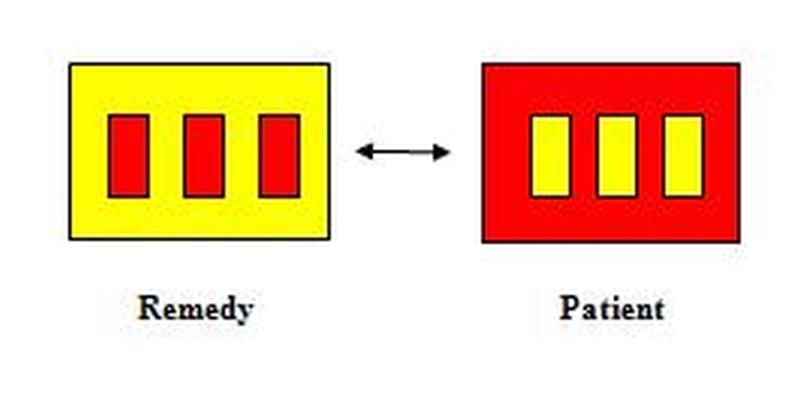

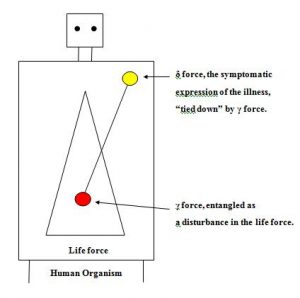

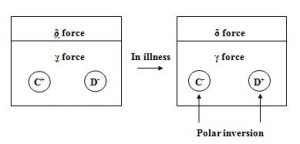


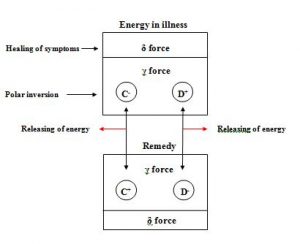

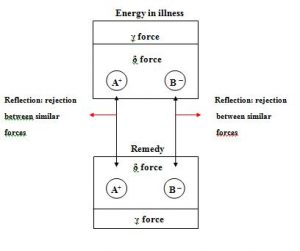







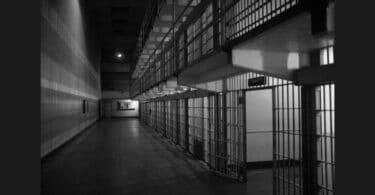

DEAR DR,
THE ESSAY IS VERY INTERESTING EVERY MAN HAS NEGATIVE AND POSITIVE FORCES IN HIM. IT IS THE BALANCE BETWEEN THESE FORCES WHICH KEEPS HIM HEALTHY THEY MAY BE CALLED VITAL FORCE. AS SOON AS THE POSITIVE OR NEGATIVE SIDE OF THIS FORCE IS OUT OF BALANCE, A MAN GETS ILL THEN THE PRINCIPLE OF SIMILAR IN HOMEOPATHY COME FOR RESTORING BALANCE AND HEALTH IN HIM. IT IS NATURAL THAT FORCE OF THE REMEDY SHOULD BE HIGHER THAN THE DISEASE TO ENABLE THE REMEDY TO OVERCOME THE DISEASE.
THANKS
DR C S GUPTA
Dear Dr. Gupta,
Thank you for your comment! I do agree with everything you say, and I find interesting the comment that the force of the remedy should be higher than the disease. May I add- the inner force of the patient should become in time higher than the force of the illness and then we have great chances of cure. Do the homeopathic remedies supply this force? I believe that with time and with the right work they do.
With kind regards,
Hillel Friesel
([email protected])